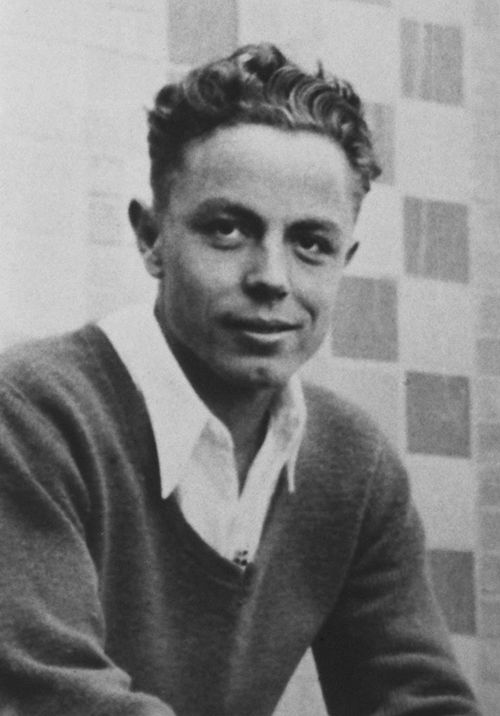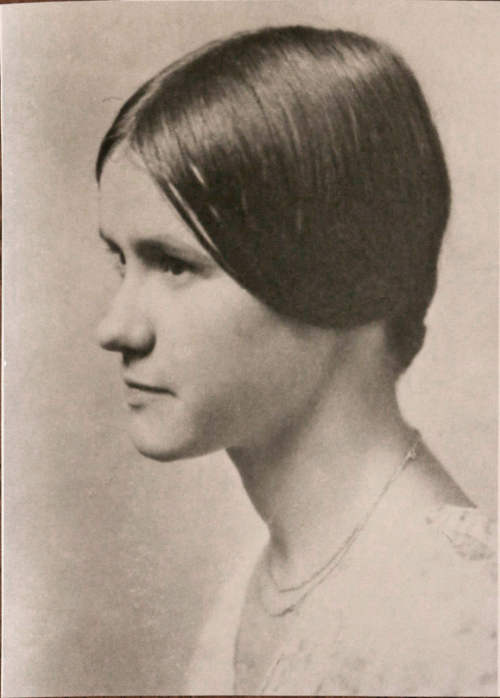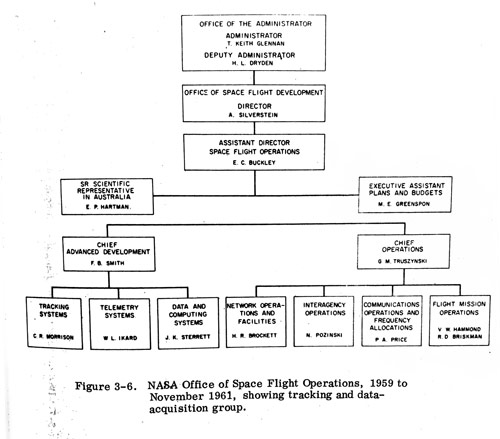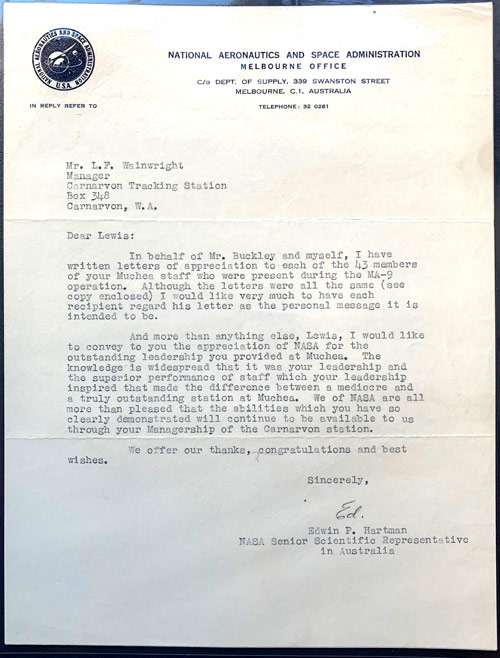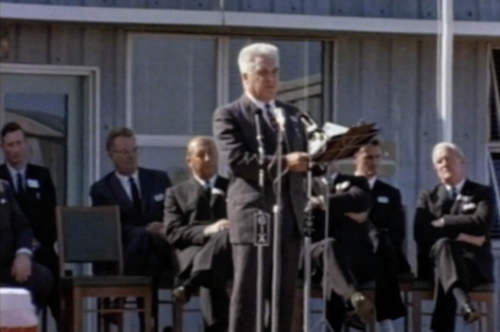Edwin Hartman at Langley Field, Virginia, mid-1930s.
Edwin P. Hartman
1905 – 1996
First NASA Senior Scientific Representative to Australia
Edwin P. Hartman was NASA’s first Senior Scientific Representative in Australia, from 1960 to 1964.
He came to Australia as a distinguished mechanical engineer with decades of experience in aeronautics.
Education.
After graduating with a degree in Mechanical Engineering from Marquette University in Wisconsin, he secured a position with the National Advisory Committee on Aeronautics (NACA, later NASA). He later earned a Masters degree at CalTech in Aeronautical Engineering.
From 1930 to 1940 Hartman was engaged in aeronautical research as an engineer at NACA's Langley Memorial Aeronautical Laboratory at Langley Field, Virginia. There he worked with the men who, in 1940, would move to California to establish the Ames Research Center. (5.)
Edwin Hartman at Langley Field, Virginia, mid-1930s. Photo courtesy Joan Fellers, Edwin Hartman’s daughter. |
Langley and then the West Coast
While at Langley he began a long friendship with Edmond C. Buckley, later NASA’s Associate Director of Tracking and Data Acquisition. Of Buckley, Christopher Columbus Kraft wrote, “He deserves the NASA credit for building the World Wide Network”. (3.)
In the summer of 1938 Edmond Buckley almost died from a kidney infection, failed surgery and huge loss of blood. He had a rare blood type and needed transfusions. Ed Hartman, who had the same blood type, offered himself as a blood donor. Ed Buckley’s son Doug explains, “The doctors gave Dad blood with a direct transfusion from Ed enough times to keep him alive and almost wasting Ed. So they were ‘blood brothers’ but never talked about it.” (4.)
In 1940 Hartman was appointed NACA Western Coordination Officer in charge of the NACA’s fledgling West Coast office. Though it was never a part of Ames, Hartman’s office was at first housed in the temporary building from which initial construction of Ames facilities was being supervised. Later, his office moved to the Los Angeles area.
Miss Jean Kinsley, a fellow employee at the Langley Laboratory and editor of NACA reports, became Hartman’s wife in 1939. When he undertook his west coast assignment, Jean became his secretary. Ed Hartman’s staff was small, so his wife-secretary served as an assistant. (5.)
Jean Kinsey in 1932, aged 21, while a student at the University of Hawaii. Photo courtesy Joan Fellers. |
While in California, Hartman served as NACA’s ‘eyes and ears’, regularly visiting various aeronautical and aerospace companies as well as universities to observe and to obtain briefings on their work. These he reported back to NACA director Hugh Dryden and colleagues in Washington. (5.)
In early 1959, he attended briefings at the Air Force Ballistic Missile Division in Los Angeles on industry proposals to support the USAF’s SR-183 study on manned lunar observatories. Hartman has been described as “a keen and meticulous observer”. (6.)
Australia
Edmond Buckley’s son Doug remembers,
“In the 1960s Ed wanted to retire, but was not ready and Dad wanted a liaison he trusted who would be good in Australia … that was perfect for Ed’s personality. He was quiet with a trusting smile and knew everyone. So that is how Ed Hartman came to work there for a few years before finally retiring. He loved it.”
This organisation chart of the NASA Office of Space Flight Operations, Data and Tracking Acquisition Group, 1959-1961, shows Hartman as the Senior Scientific Representative in Australia. From page 31 of A History of The Deep Space Network, by William Corliss, May 1 1976. NASA CR-151915. Honeysuckle TSS copy, courtesy Mike Dinn. |
From May 1960 to mid 1964, Hartman was based at NASA’s Australian Office which was hosted by the Department of Supply at 339 Swanston Street, Melbourne. (1, 2.)
Edwin Hartman in Melbourne, 1963. Photo courtesy Joan Fellers. |
Hartman and his family initially came for a two year term, but, at Hartman’s request, it was extended to four years.
During his busy tenure, four NASA tracking facilities were built in Australia –
Letters written by Hartman to staff and management at the tracking stations were warm and encouraging.
Ed Hartman wrote this letter to Lewis Wainwright after the closure of Muchea. Courtesy Cathy Wainwright and Kevin Wainwright. |
After a very full four years, Hartman concluded his time in Australia – around the time of the opening of Carnarvon Tracking Station in June 1964. His boss and friend Ed Buckley offically represented NASA at the opening ceremony. Hartman’s name appears on the guest list, and it is likely it was his last official engagement before returning to the US.
Ed Buckley at the opening of Carnarvon Tracking Station, 25 June 1964. |
Hartman was succeeded in Australia by Ray Hooker who arrived in the country in April 1964 and probably had some familarisation before offically starting.
Return to the USA
After his return to the USA, Edwin Hartman was engaged by NASA to write the history of the Ames Research Center from 1940 to 1965.
In his foreword to the book, then Ames Director Julian Allen wrote,
“[Hartman] had been in an ideal position to evaluate Ames activities and relate them to contemporary events. His written reports in that period had attracted attention to his skills as a keen observer and perceptive reporter.” (5.)
Notes:
1. Bob Leslie, Space Tracking Stations, article published by Engineers Australia.
2. Letter to Lewis Wainwright.
3. E-mail from Chris Kraft, 18 January 2012.
4. Correspondence from Doug Buckley, January 2013.
5. H. Julian Allen, Director, Ames Research Center in Hartman, Edwin P. Adventures in Research: A History of Ames Research Center, 1940-1965. NASA SP-4302, 1970, page ix.
6. Nuking the site from orbit: when the Air Force wanted a base on the Moon, by Dwayne A. Day, The Space Review, November 4, 2019.
7. Unpublished notes from Craig Waff, JPL contract historian, 1994, state that Hartman arrived in Australia in May 1960.
With special thanks to Joan Fellers, Doug Buckley and Brian Larwood for all their help.
